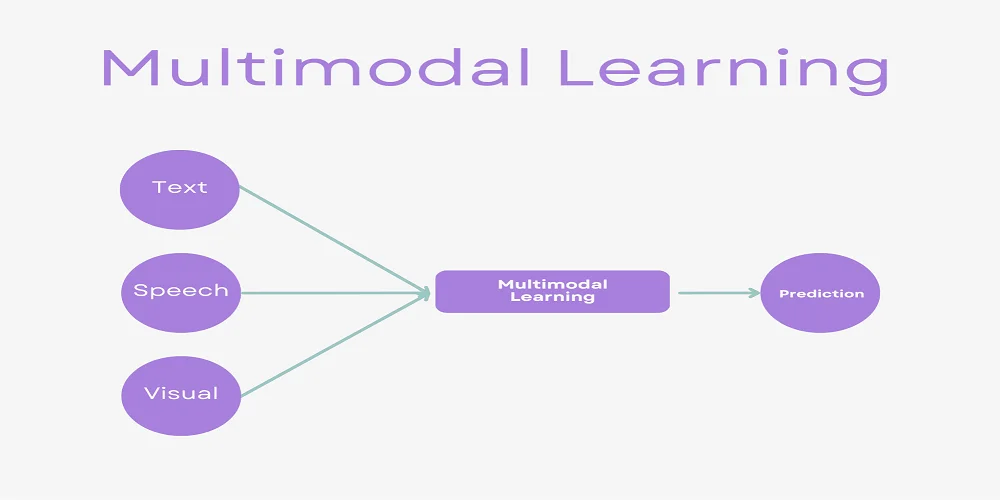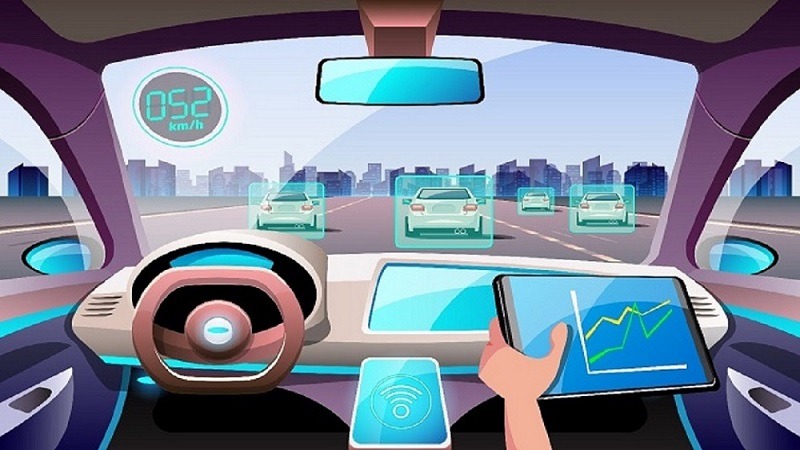Multimodal Bots: An Introduction
In the realm of Artificial Intelligence, multimodal bots are computer programs that can interconnect and engage with humans via various internal and external modalities. Although robotics has grown significantly in recent years, it is still relatively difficult to construct a robot that is capable of communicating with humans naturally.
Also, synthesizes multimodal gestures that are intelligible in a range of interaction circumstances. The robot must possess a high degree of multimodal identification for it to be able to perceive the inner emotions, objectives, and character of the individual while it is delivering appropriate feedback. The expansion of the Internet of Things has resulted in the proliferation of devices that facilitate human-robot interaction, which has become an integral aspect of daily life.
What is Multimodal Learning?
In the field of machine learning, multimodal learning refers to a style of learning in which the model is taught to comprehend and operate with many types of input data, including text, pictures, and audio. Nevertheless, there are a few difficulties associated with MMML. The ability of artificial intelligence to recognize a common language to communicate and translate data so that it might be utilized is restricted. Additionally, it the utmost importance to have a comprehensive understanding of the intricacies and distinctions that exist among multimodal learning and multimodal artificial intelligence. These multimodal bots can offer a wide variety of user preferences and communication methods since they can process and react to multimodal input.
Multimodal bots can comprehend and react to an extensive variety of communication methods, including voice instructions, facial expressions, body language, and even feelings in contrast to conventional bots, which use text-based communication only. This significant innovation paves the way for a whole new universe of possibilities for interactions between people and robots that are both smooth and intuitive. Developing AI voice assistants that are well-organized, precise, and flawlessly combined into many platforms needs the know-how of a dedicated voice bot development company.

Understanding a Multimodal Design Method
Human-computer interaction examines how humans interact with technology objects and how they are designed. Devices or programs that use speech as the main input and output are referred to as voice platforms. Both the Amazon Echo as well as the Google Home are voice-activated technologies. Another design method is called voice-first, and it involves beginning the design of the voice interface when you add any textual or graphic user interface components. This is done to guarantee that users can engage without using their hands or their eyes. Bots that are incorporated into numerous conversational channels, such as Amazon Alexa, Google Assistant, FB, and Webchat, are referred to as multimodal bots.
In the process of developing a conversational experience, artists need to take into consideration how to make the most of the distinctive voice and visual affordances shown by each channel. Both Amazon Alexa and Google Assistant, which are now the most popular conversational pathways, now offer multimodal access to the most recent screen strategies and policy upgrades. When visual user interface features are correctly incorporated, they enhance usability and make it easier for users to traverse an interface. Even while using a voice-first design method, developers must take into consideration the visual user interface components that are present on the network. These features have the potential to enhance the accessibility of the interface.
Various Uses of Multimodal Bots in the Real World
Streamlining customer service encounters by providing a smooth and customized experience is one of the ways that multimodal bots are helping to streamline customer service. Customers can communicate with these multimodal bots using voice instructions, text messages, or even facial expressions, which results in a more natural and intuitive connection between the two parties.
Additionally, these bots can give quick help, respond to questions, and direct clients through complicated procedures, which ultimately results in increased customer satisfaction. Through the integration of many forms of communication, including speech, text, gestures, and graphics, multimodal bots are bringing about a revolution in the field of human-computer interaction. The real-world applications of multimodal bots are quite fascinating and include a wide range of applications. Let’s take a closer look at some of how these bots are shaping a variety of different businesses.
-
The Healthcare Industry
Multimodal bots are proven to be game-changers in the healthcare industry. Patients can transmit their symptoms by voice or text, and the bot will evaluate the information, offer pertinent medical advice, or arrange appointments based on the information. It is also possible for these bots to assist medical personnel by obtaining patient data and presenting information in real time during emergency circumstances. This will eventually result in improved patient care and the saving of lives.
-
Education
Multimodal bots are also revolutionizing the method by which we learn. The learning process may be made more immersive and engaging via the use of interactive images, voice commands, and text-based quizzes, which help students become more engaged in the process. A more productive educational environment may be created via these bots, which can deliver tailored feedback and adaptive learning experiences depending on the specific requirements of each student.
-
Virtual Assistants
The proliferation of virtual assistants such as Siri, Alexa, and Google Assistant is a prime example of the power that multimodal bots have in daily life. Voice recognition, text-based replies, and visual displays are all capabilities that these bots possess, allowing them to carry out activities and provide answers to questions. The use of virtual assistants has become an essential component of our day-to-day activities, ranging from the management of calendars and the scheduling of reminders to the control of gadgets in the smart home.
Multimodal Bots: Best Practices

When it comes to designing good multimodal bot interfaces, thorough thinking and attention to detail are required qualities. It is important to bear in mind the following recommended practices:
1) Consistency
Ensure that you are consistent throughout all of the numerous modes of communication, including voice, text, and images. Regardless of how the user interacts with the bot, it is ensured that the user experience is consistent and uninterrupted.
2) Communicate in Succinct Manner
The replies that the bot provides should be designed to be clear, brief, and simple to comprehend. If you want to avoid confusing the user, you should avoid using complicated terminology or technical jargon. Make use of terminology that is easy to understand and conversational to establish a nice and accessible contact.
3) Visual Cues and Feedback
Incorporate visual signals to improve the overall experience of the user on your website. When guiding the user and providing feedback, it is helpful to make use of animations, colors, and icons. Indicators that are visible to the user might either assist them in comprehending the bot’s answer or motivate them to do further activities.
4) Context-Awareness
Construct the bot such that it is aware of its surroundings, recognizing the user’s prior interactions and the user’s requirements by those interactions. In addition to making the discussion more efficient, this may also make the experience more tailored to the individual participants.
5) Navigation User-Friendly
Make sure that the interface of the bot is straightforward to understand and navigate. It will be much simpler for users to locate the information they are looking for or carry out the actions they have requested if you provide them with clear alternatives and prompts to pick from.
6) Handling Errors
Anticipate and gently deal with any mistakes that may occur. Error messages should be designed to be informative and useful, directing the user in the right direction of how to remedy the mistake or presenting other solutions.
7) Accessible
Making your multimodal bot interface accessible to users with varying abilities is the seventh issue to take into account regarding accessibility. To cater to a diverse group of users, you may want to think about implementing accessibility features like voice commands, keyboard navigation, and visual assistance.
8) Continuous Improvement
Keep an eye on the input and actions of users to pinpoint places that might require some tweaking. The design and functions of the bot should be updated and improved regularly to improve the user experience and handle any problems that may arise.
9) Autonomous Vehicles
Textual and visual signals may be understood and responded to by autonomous cars with the assistance of multimodal deep-learning models. To make navigation more secure and successful, this involves the analysis of road signs, the interpretation of traffic conditions based on photographs, and the integration of this information.
Through evaluating both textual and visual data, LLMs can give drivers real-time assistance. This helps contribute to features like lane-keeping assist and accident prevention.
Bottom Line
From manipulative informal flows to applying voice recognition and combination capabilities, a qualified voice bot development company safeguards that its voice bot not only knows user’s queries. With multimodal bots, companies could improve user experiences, rationalize tasks, and connect the gap between humans and machinery.



